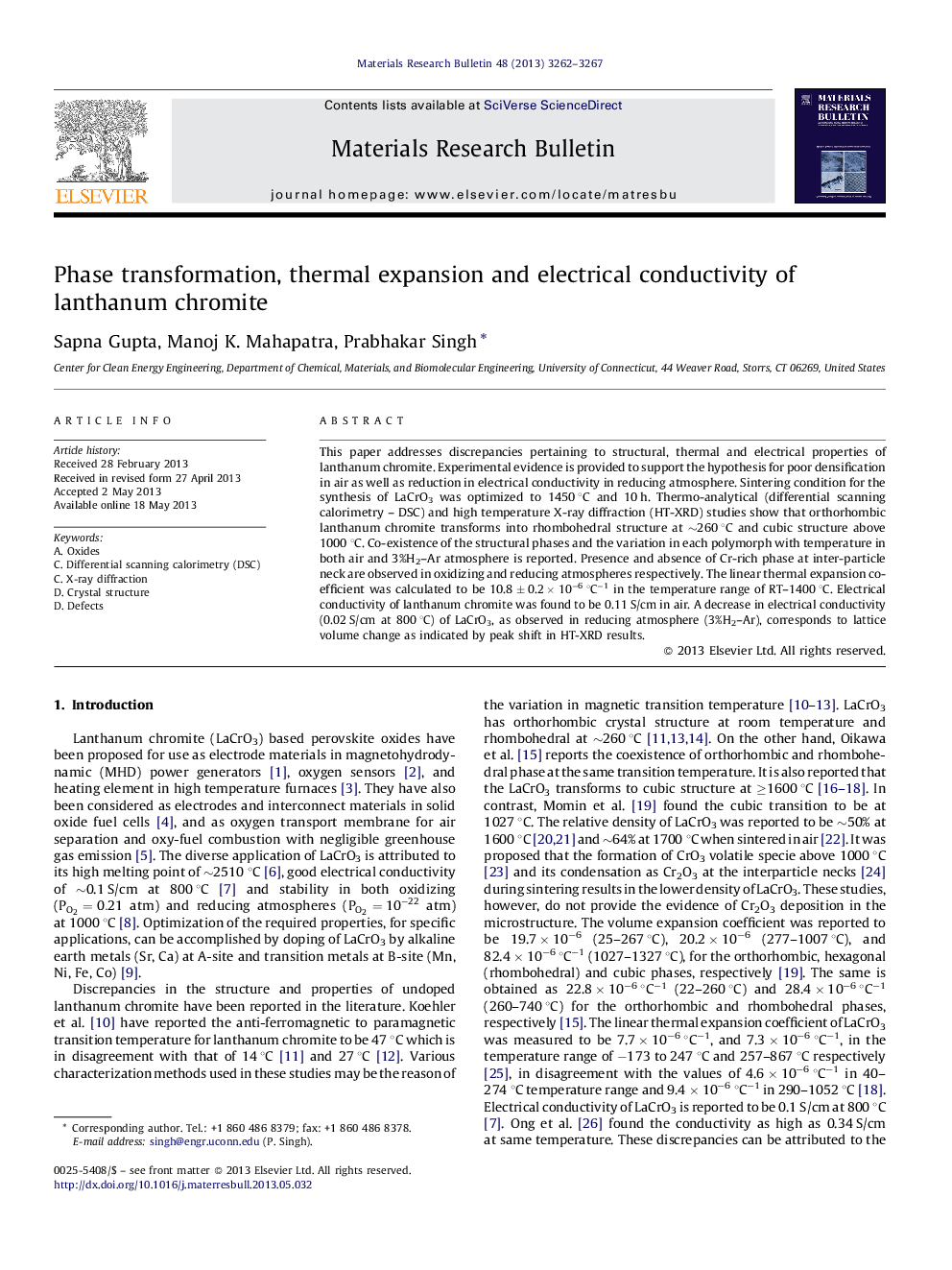| Article ID | Journal | Published Year | Pages | File Type |
|---|---|---|---|---|
| 1488850 | Materials Research Bulletin | 2013 | 6 Pages |
•Orthorhombic and rhombohedral phases co-exist at ≥260 °C and cubic above 1000 °C.•Polymorphic changes with temperature in air and Ar–3%H2 are observed.•Lattice volume change in Ar–3%H2 atmosphere corresponds to Cr4+ → Cr3+ transition.•Change in valence state of Cr4+ to Cr3+ results in lower electrical conductivity.•Experimental evidence is provided for poor densification of LaCrO3 in air.
This paper addresses discrepancies pertaining to structural, thermal and electrical properties of lanthanum chromite. Experimental evidence is provided to support the hypothesis for poor densification in air as well as reduction in electrical conductivity in reducing atmosphere. Sintering condition for the synthesis of LaCrO3 was optimized to 1450 °C and 10 h. Thermo-analytical (differential scanning calorimetry – DSC) and high temperature X-ray diffraction (HT-XRD) studies show that orthorhombic lanthanum chromite transforms into rhombohedral structure at ∼260 °C and cubic structure above 1000 °C. Co-existence of the structural phases and the variation in each polymorph with temperature in both air and 3%H2–Ar atmosphere is reported. Presence and absence of Cr-rich phase at inter-particle neck are observed in oxidizing and reducing atmospheres respectively. The linear thermal expansion co-efficient was calculated to be 10.8 ± 0.2 × 10−6 °C−1 in the temperature range of RT–1400 °C. Electrical conductivity of lanthanum chromite was found to be 0.11 S/cm in air. A decrease in electrical conductivity (0.02 S/cm at 800 °C) of LaCrO3, as observed in reducing atmosphere (3%H2–Ar), corresponds to lattice volume change as indicated by peak shift in HT-XRD results.
Graphical abstractFigure optionsDownload full-size imageDownload as PowerPoint slide
